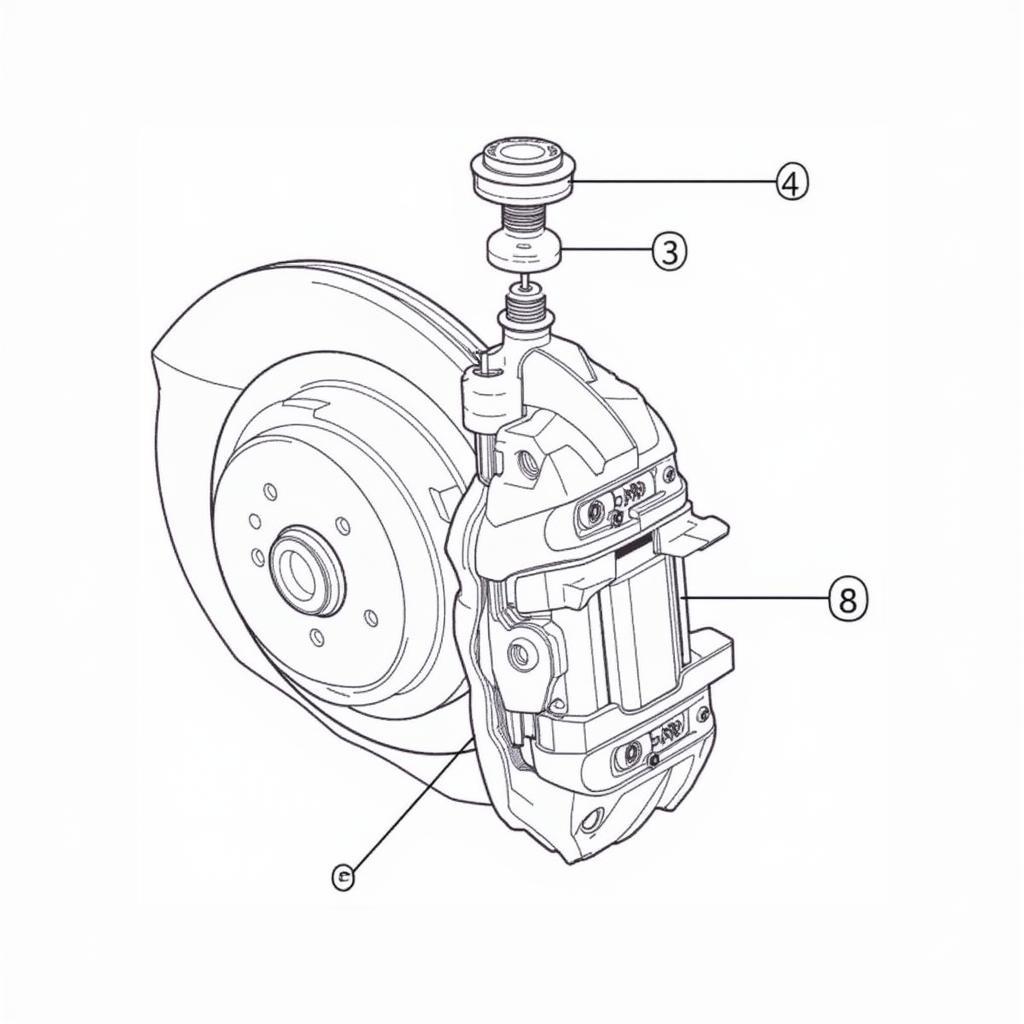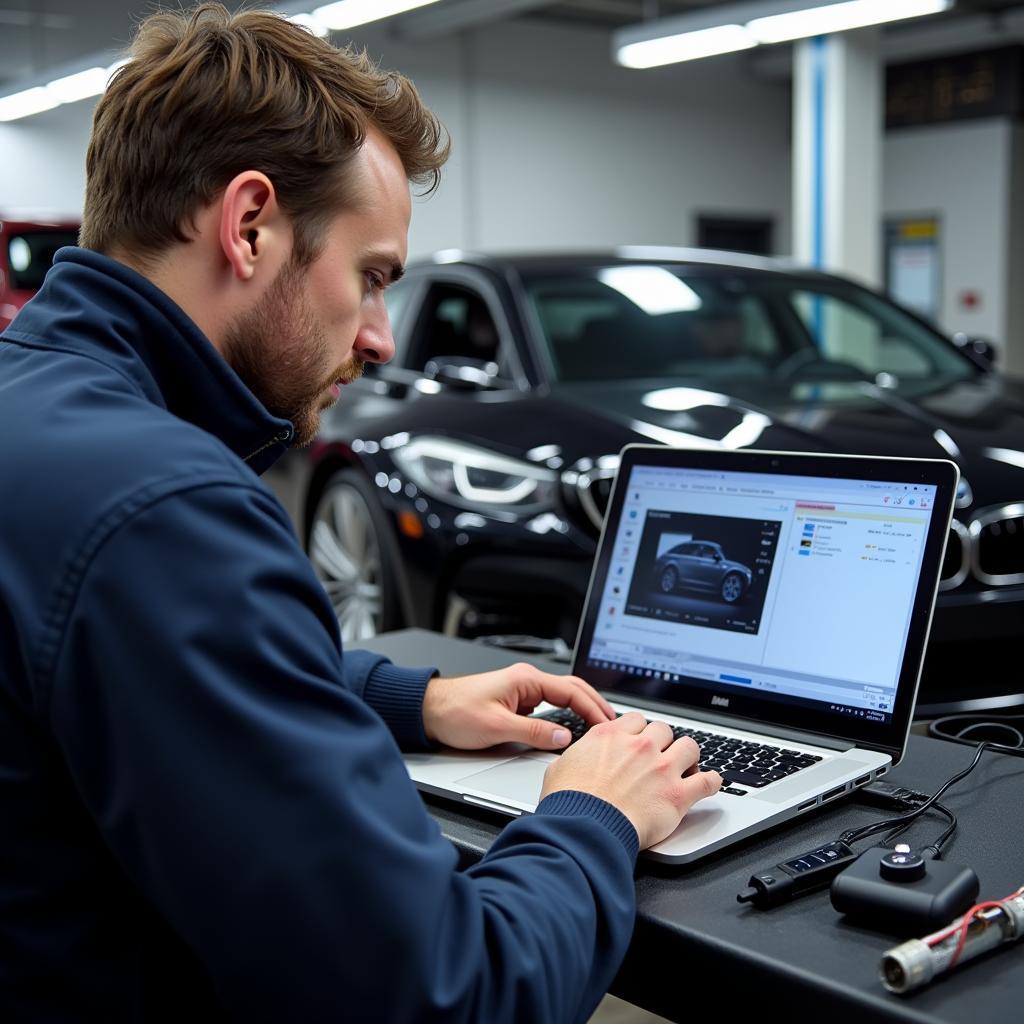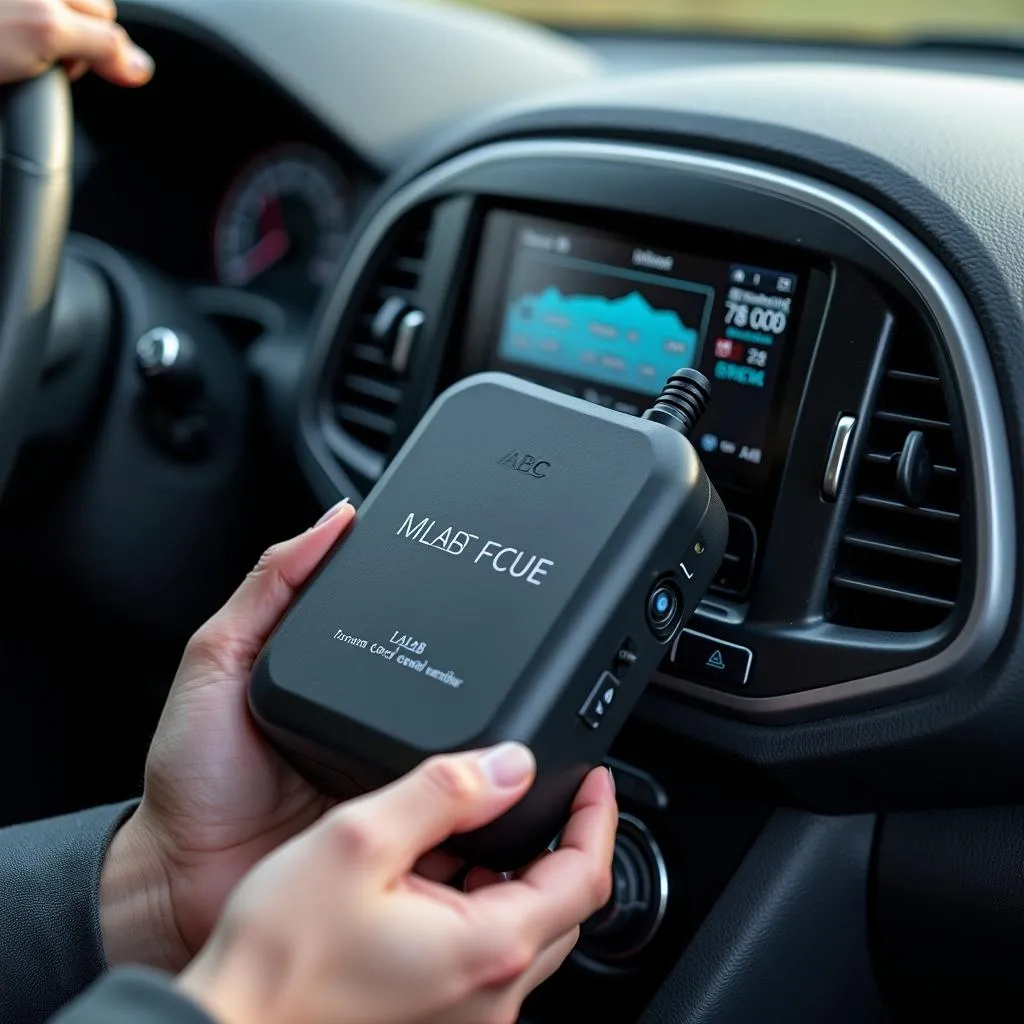The dreaded brake fluid warning light on your BMW 1 Series dashboard can be a worrying sight. It signals a potential issue with your braking system that requires immediate attention. While it might seem daunting, understanding the common causes and solutions can help you address the problem effectively and safely. This article delves into the intricacies of the BMW 1 Series brake fluid warning light, empowering you to take the right steps for a smooth and secure driving experience.
Understanding Your BMW’s Braking System
Before diving into the specifics of the warning light, it’s crucial to grasp the fundamentals of your BMW 1 Series’s braking system. This system is essentially hydraulic, relying on brake fluid to transmit force from the brake pedal to the brake calipers, ultimately stopping the vehicle.
 BMW 1 Series Braking System Diagram
BMW 1 Series Braking System Diagram
Common Causes of the Brake Fluid Warning Light
The brake fluid warning light typically illuminates for two primary reasons:
1. Low Brake Fluid Level:
This is the most common culprit. Brake fluid levels naturally decrease as your brake pads wear down. However, a sudden drop in fluid level might indicate a leak in the system.
-
Worn Brake Pads: As your brake pads wear thin, the brake calipers need to extend further to engage the rotors, requiring more brake fluid. If the pads wear down significantly, the fluid level can drop enough to trigger the warning light.
-
Brake Fluid Leak: A leak anywhere in the intricate network of brake lines, hoses, or connections can lead to a dangerous drop in brake fluid pressure.
2. Faulty Brake Pad Wear Sensor:
Most BMW 1 Series models are equipped with brake pad wear sensors. These sensors are small wires embedded within the brake pads. As the pads wear down, the sensor wire eventually makes contact with the brake rotor, completing a circuit and triggering the warning light.
Diagnosing the Problem
Identifying the root cause requires a systematic approach:
-
Check the Brake Fluid Level: Park your vehicle on a level surface and locate the brake fluid reservoir under the hood. The reservoir is usually translucent, allowing you to visually inspect the fluid level. Refer to your owner’s manual for its exact location and the recommended fluid type.
-
Inspect for Leaks: If the fluid level is low, visually inspect all brake lines, hoses, and connections for any signs of leaks. Look for wet spots, drips, or a dampness around these components. Brake fluid is typically light brown and has a slightly oily texture.
-
Consider Brake Pad Wear: If you can’t find any leaks and the fluid level is just slightly low, your brake pads might be nearing the end of their service life. Have your mechanic inspect the brake pads to determine if they need replacement.
What to Do When the Light Comes On
If the brake fluid warning light illuminates, it’s crucial to act promptly:
-
Pull Over Safely: Find a safe location to stop your vehicle as soon as possible. Driving with low brake fluid or a leak is extremely dangerous.
-
Do Not Continue Driving: Continuing to drive with a compromised braking system can lead to brake failure, putting you and others at risk.
-
Seek Professional Help: Contact a qualified mechanic specializing in BMW vehicles to diagnose and repair the issue. Provide them with detailed information about when and how the warning light appeared.
Remote Diagnostic and Programming Services for BMW Brake Issues
Advancements in automotive technology have led to the emergence of remote diagnostic and programming services. These services utilize specialized software and equipment to diagnose and potentially resolve brake system issues remotely.
A trained technician can remotely access your BMW’s onboard computer system to retrieve diagnostic trouble codes, analyze sensor data, and even perform software updates or programming if necessary. These remote services offer several advantages:
-
Convenience: You can have your vehicle diagnosed and potentially repaired from the comfort of your home or office.
-
Faster Turnaround Times: Remote diagnostics often expedite the troubleshooting process, potentially reducing repair times.
-
Access to Specialized Expertise: You can connect with technicians specializing in BMW vehicles, regardless of your location.
 BMW Technician Performing Remote Diagnostics
BMW Technician Performing Remote Diagnostics
However, it’s essential to note that not all brake issues can be resolved remotely. Physical repairs, such as replacing brake pads, lines, or other components, will still require an in-person visit to a repair shop.
Preventing Future Brake Issues
Proactive maintenance is key to preventing future brake problems:
-
Regular Brake Fluid Flushes: BMW recommends flushing your brake fluid every 2 years or as specified in your owner’s manual. This ensures optimal braking performance and prevents internal corrosion within the system.
-
Timely Brake Pad Replacements: Don’t wait for the brake pad wear sensor to activate. Regularly inspect your brake pads and have them replaced before they wear down excessively.
-
Address Leaks Immediately: Any signs of a brake fluid leak should be addressed promptly by a qualified mechanic.
Conclusion
The brake fluid warning light in your BMW 1 Series is a crucial safety indicator that should never be ignored. By understanding the potential causes, taking immediate action when the light appears, and adhering to a proactive maintenance schedule, you can ensure a safe and enjoyable driving experience. Remember, a well-maintained braking system is paramount for your safety and the safety of others on the road.


